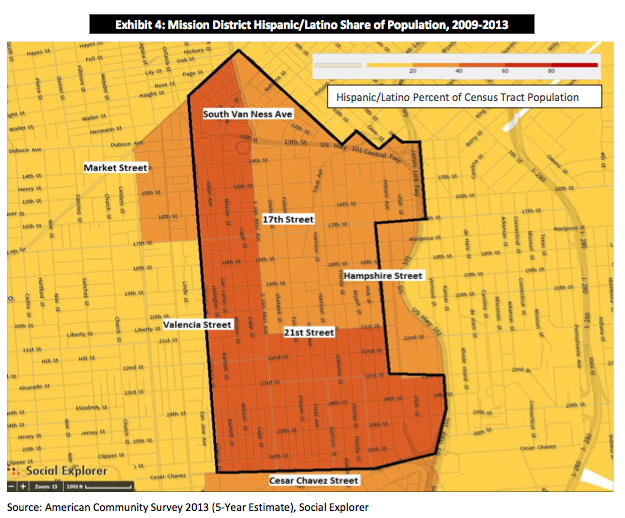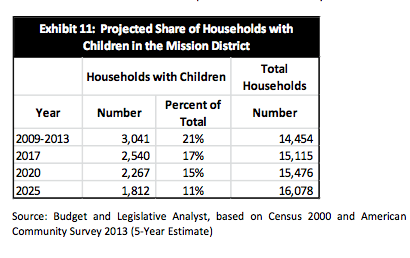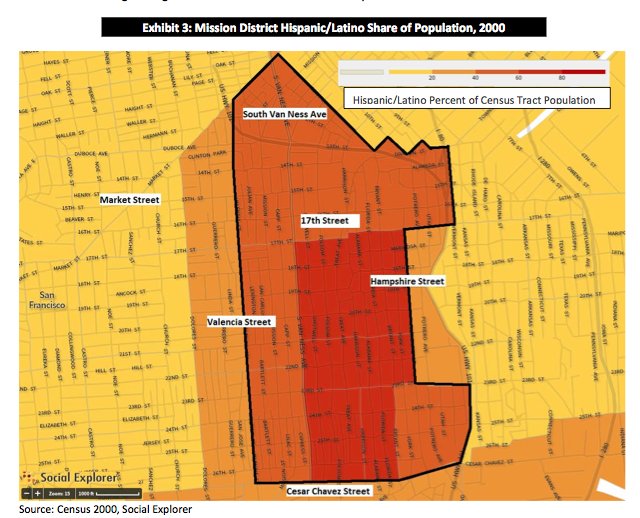
The loss of Latino Mission dwellers is projected to coincide with an increase in the number of households earning $150,000 and above annually -- a demographic projected to rise from 12 percent in 2000 to 26 percent by 2025.
The number of Mission households with children is also expected to drop, to a projected 11 percent by 2025, compared with an estimated 21 percent today.
“If the status quo continues, we are going to lose this neighborhood as we know it,” Supervisor David Campos, who represents the Mission, said at a City Hall press conference Tuesday.
“If the current trend in development continues and we let the market do what it has been doing -- which is continue to build luxury housing -- what will happen to the racial and economic diversity of the Mission?" Campos asked. "How much housing would we have to build in this neighborhood for prices to actually come down?”
The budget and legislative analyst's report broadly answered that question, too -- with some mind-boggling math.
Borrowing from an analysis performed by the California Legislative Analyst’s Office, the report suggested San Francisco wouldn’t find itself in its present housing affordability mess if it had managed to build 459,000 housing units between 1980 and 2010, instead of the 60,334 units actually built. Currently, the city has about 370,000 housing units.
Essentially, this means that to bring housing costs down to a level considered normal nationwide, “we’d have to double the size of San Francisco,” Campos said.
The study was released a week before San Franciscans vote on Proposition I, a measure backed by Campos that would impose a moratorium on market-rate housing development in the Mission.
“What’s happening in this city is not working,” Campos said. “We need a change of direction. That’s what Prop. I and the neighborhood stabilization plan are about -- creating a new plan and a new direction for the Mission.”
The legislative analyst’s report isn’t the first formal study examining the future of the Mission in light of the proposed Mission development moratorium.
In September the city controller's office released a report by chief economist Ted Egan, which found that the proposed moratorium would “lead to slightly higher housing prices across the city, have no appreciable effect on no-fault eviction pressures, and have a limited impact on the city's ability to produce affordable housing during the moratorium period.”
The study also found that a moratorium “would temporarily preserve sites that could later be acquired for affordable housing, but it is highly unlikely that it would reduce the cost of any such site.”
Egan’s study was produced at the behest of supervisors Mark Farrell and Scott Wiener, who both oppose Prop. I.
“Proposition I for me is going to be a huge step in the wrong direction," Farrell said in an interview. "I don’t think that today in San Francisco we should be promoting policies that will cause housing prices to increase and that will halt the production of affordable housing. That is the wrong approach.”
Prop. I proponents champion the moratorium as a strategy to allow for a plan to create affordable housing, but Egan’s report suggested the housing freeze would do little to address the underlying issue of displacement due to property prices. If trends from the last two years continue, the legislative analyst said, Mission home prices could more than double in the next decade. Under the report's most conservative projection, prices would rise by 9 percent by 2025.
The new report by the budget and legislative analyst also suggests San Francisco’s total Latino population has actually held steady despite the recent declines in the Mission. U.S. Census data reflect an increase in Latino households in other San Francisco neighborhoods, including the Bayview, Mission Terrace, Excelsior and Lakeshore.
The report said it's impossible to say whether Latinos from the Mission are relocating to these other neighborhoods or are leaving the city entirely and being replaced with Latino residents new to San Francisco.
Alex Emslie contributed to this report.



